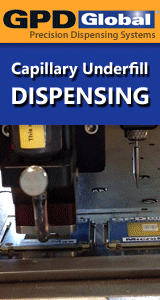Printed Circuit Board Assembly & PCB Design Forum
SMT electronics assembly manufacturing forum.
- SMTnet
- »
- Electronics Forum
- »
- Using isopropanol with DI water for rinsing after washing boards
Using isopropanol with DI water for rinsing after washing boards
Views: 8791
![]() Hello all,
We have an old batch cleaning machine in our p...
- Nov 09, 2011
by
Julien
Hello all,
We have an old batch cleaning machine in our p...
- Nov 09, 2011
by
Julien
![]()
![]()
![]() While you're waiting for others to reply, search the fine SM...
- Nov 10, 2011
by
davef
While you're waiting for others to reply, search the fine SM...
- Nov 10, 2011
by
davef
![]()
![]()
![]() The use of IPA in automated defluxing systems is nearly exti...
- Nov 10, 2011
by
Michael
The use of IPA in automated defluxing systems is nearly exti...
- Nov 10, 2011
by
Michael
![]()
![]()
![]() Thanks guys,
But for the cleaning process we already have a...
- Nov 11, 2011
by
Julien
Thanks guys,
But for the cleaning process we already have a...
- Nov 11, 2011
by
Julien
![]()
![]()
![]() On cleaning under low standoff components: How about reading...
- Nov 11, 2011
by
davef
On cleaning under low standoff components: How about reading...
- Nov 11, 2011
by
davef
![]()
![]()
![]() Sure it's big enough!
But unfortunately we can't go this ye...
- Nov 11, 2011
by
Julien
Sure it's big enough!
But unfortunately we can't go this ye...
- Nov 11, 2011
by
Julien
![]()
![]()
![]() What is the size of the low standoff components you find tra...
- Nov 11, 2011
by
SheanDalton
What is the size of the low standoff components you find tra...
- Nov 11, 2011
by
SheanDalton
![]()
![]()
![]() We already have contact with Zestron and we try several chem...
- Nov 14, 2011
by
Julien
We already have contact with Zestron and we try several chem...
- Nov 14, 2011
by
Julien
![]()
![]()
![]() Have you tried an ultrasonic water cleaning process? We use...
- Nov 14, 2011
by
dyoungquist
Have you tried an ultrasonic water cleaning process? We use...
- Nov 14, 2011
by
dyoungquist
![]()
- SMTnet
- »
- Electronics Forum
- »
- Using isopropanol with DI water for rinsing after washing boards







